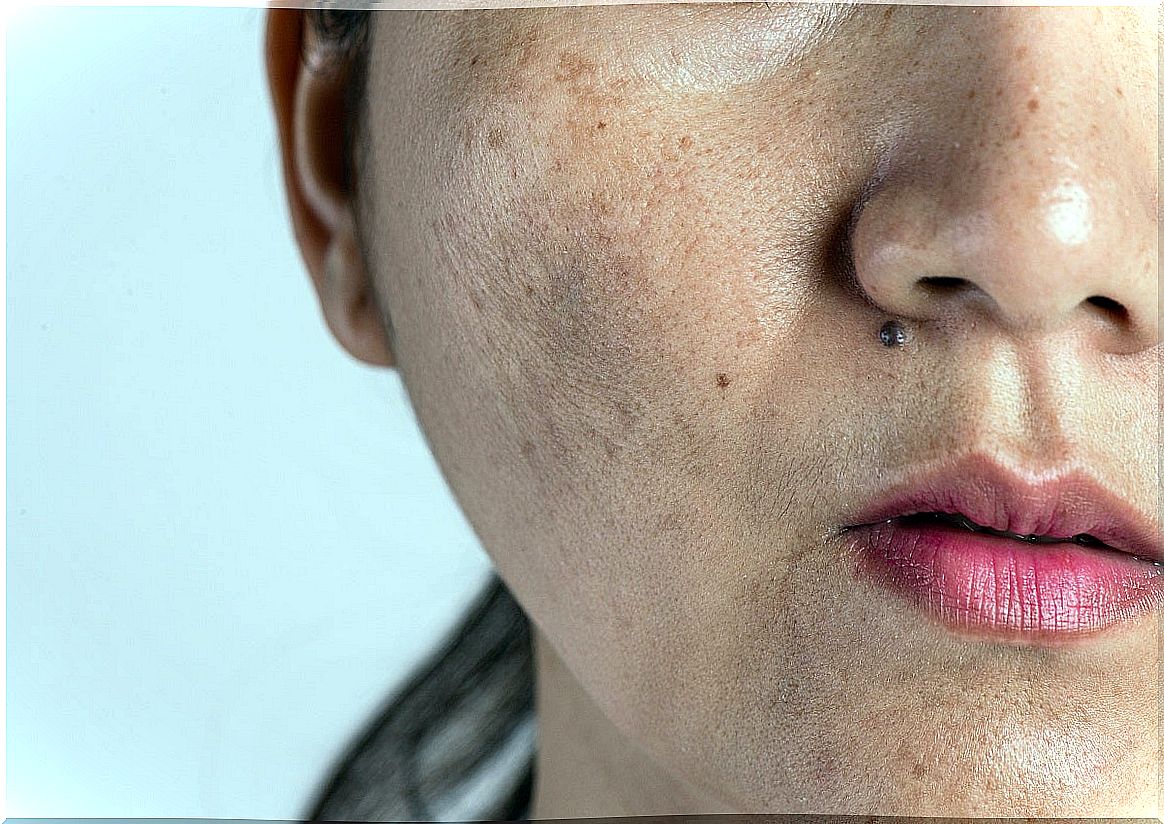What Are The Types Of Treatments For Melasma?
Melasma is a dermatological problem characterized by the appearance of brown or grayish-brown spots on the face. It can appear due to multiple factors; however, in particular it occurs due to an increase in the production of melanin. What are the types of treatments for melasma?
Although this condition does not cause complications or serious health situations, its presence is considered unsightly and can lead to self-esteem problems. Therefore, there are those who decide to access the therapeutic options to treat it, which include from topical and oral therapies, to aesthetic procedures.
What is melasma?
Melasma is a symmetrical hyperpigmentation condition that is usually located on the face. It is more prevalent in young women, especially those with dark skin, although it also affects men. Its cause is an increase in the level of melanin, the pigment that gives the dermis its color.
However, recent studies, such as one documented in the Journal of Dermatological Science, show that it is related to an increase in erythema and telangiectasias in the affected areas, suggesting a vascular component in this condition.

Main risk factors
There are several risk factors associated with the appearance of this condition on the skin. In particular, the following stand out:
- Exposure to ultraviolet (UV) rays.
- Use of certain cosmetics.
- Consumption of phototoxic drugs and anticonvulsant drugs.
- Hormonal fluctuations, such as those that occur during pregnancy, by the use of contraceptives or by other hormonal therapies.
- Having a family history of melasma.
Types of melasma
Melasma can be classified based on the location of the skin spots. Thus, we find the following forms:
- Centrofacial : this is the main clinical pattern, since it corresponds to between 50% and 80% of cases. It affects the forehead, nose, and upper lip, and excludes the nasolabial fold, cheeks, and chin.
- Malar : confined to the malar cheeks of the face.
- Mandibular: present on the jaw line and chin.
- Extrafacial – This is a newer pattern, which can occur in parts of the body such as the neck, sternum, forearms, and upper extremities. It is seen more frequently in menopausal women.
Types of treatments for melasma
There are several types of treatments for melasma. In any case, they all aim to decrease hyperpigmentation, photodamage, inflammation, and other associated symptoms. Options include topical products, oral drugs, procedures, and combination therapies. We detail them below.
Laser therapy
The efficacy of lasers for treating melasma has been associated with unwanted cosmetic results. Its use should be considered in cases of extensive disease, which is refractory to the use of lasers, since they can actually worsen the condition.
These can use heat energy to selectively target various chromophores on the skin. Non-ablatives are generally preferred over ablatives because they cause less inflammation and therefore less alteration of the post-inflammatory pigment.
Chemical peels
Chemical peels have been studied as a complementary treatment modality for melasma due to their ability to increase epidermal remodeling and increase keratinocyte turnover. They are often used in combination with other topical products. In the case of melasma, glycolic acid is often used.

You may be interested: 10 types of facial peel
Oral treatment
Oral therapies have gained importance in dealing with melasma. Of these, the most promising options include tranexamic acid, Polypodium leucotomos, and glutathione. Even so, they should be used with caution, as they cause adverse effects such as the following:
- Tinnitus
- Headache.
- Abdominal distension.
- Menstrual irregularities.
- Deep vein thrombosis (rarely).
Topical products
Topical products are the most popular of all types of melasma treatments. Of these, hydroquinone has been the most studied topical agent against this type of skin blemish. And while it is considered effective and can be used in various concentrations, it can also cause irritant dermatitis in certain people.
On the other hand, various studies suggest that substances such as ascorbic acid and kojic acid contribute to inhibiting the activity of tyrosinase and, in turn, lead to a decrease in pigmentation. Topical retinoids are also considered effective.
Natural treatments
In recent years, several naturally occurring compounds have been investigated for their therapeutic activity against pigmentation. Thus, it is suggested that niacinamide inhibits melanosome transfer to keratinocytes.
Meanwhile, in vitro studies have found that aloesin, a derivative of aloe vera, inhibits tyrosinase and contributes to the improvement of skin pigmentation disorders.
It should also be noted the importance of using sunscreen as part of the treatment against melasma. This product helps mitigate the effects of the sun and prevents the worsening of spots.
Melasma has a good prognosis
Melasma is a benign skin disorder that has no morbidity. The key reason some patients seek treatment is cosmetic. Fortunately, it is a condition that resolves on its own in most cases. In addition, with the application of the aforementioned treatments, it is possible to reduce your symptoms in a short time.
In any case, it is necessary to treat it in the hands of professionals in dermatology. Applying the wrong substances can make the condition worse. Therefore, it must be an expert who determines the best therapeutic options for each one.









